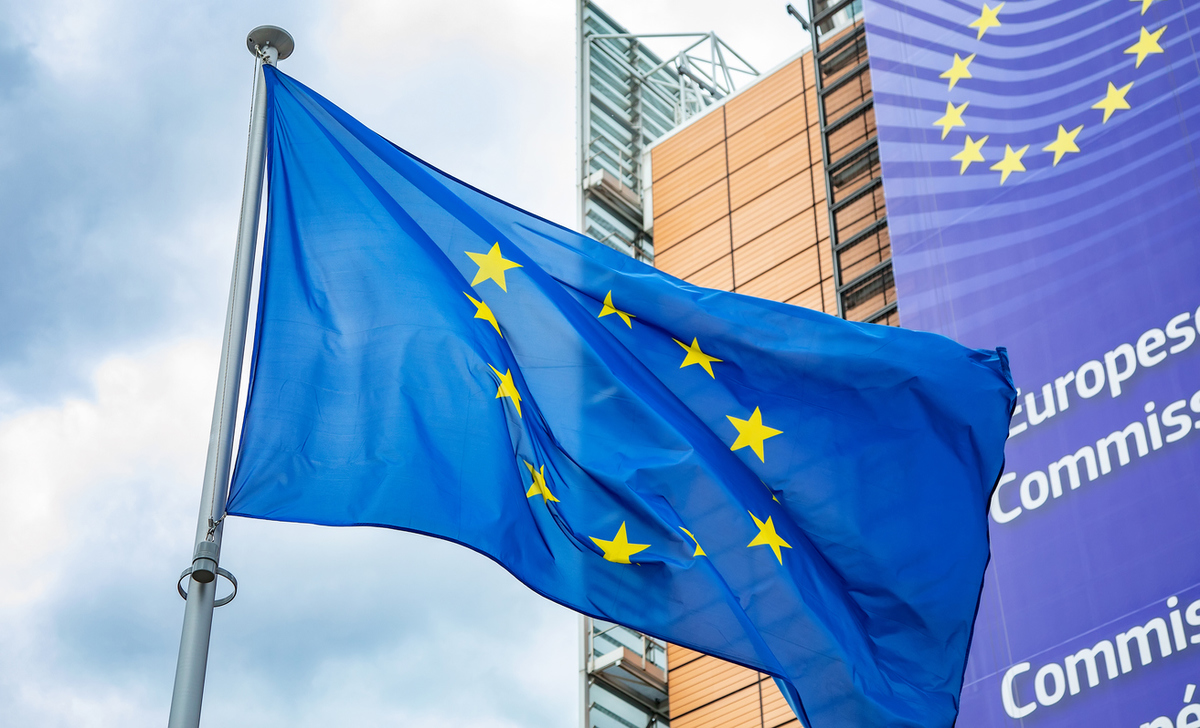EU pushes for 90% emission cut by 2040 with shipping included
The European Commission (EC) has recommended a 90% reduction in greenhouse gas emissions (GHG) by 2040, compared to 1990 levels.
 PHOTO: EU flag in front of the Berlaymont building, the headquarters of the European Commission. Getty Images
PHOTO: EU flag in front of the Berlaymont building, the headquarters of the European Commission. Getty Images
This lofty target comes after last year's EU adoption of a set of proposals from the Commission to achieve a minimum 55% reduction in GHG emissions by 2030 - also in comparison to 1990 levels. The road from a 55% reduction by 2030 to a more ambitious 90% reduction by 2040 marks a substantial stride towards net-zero emissions by 2050.
The targets outlined by the European Commission surpass those set by the International Maritime Organization (IMO). The IMO last year revised its GHG strategy, introducing "indicative checkpoints" to reach net-zero emissions by 2050. These checkpoints include a 20-30% reduction in GHG emissions by 2030 (relative to 2008 levels) and a 70-80% reduction by 2040.
The Commission's proposal indicates that adopting a 90% target within the EU would contribute significantly to meeting global emission targets set by organisations like the IMO.
The objectives outlined in FuelEU Maritime will drive the adoption of low-emission marine fuels and green ships, the Commission asserts. It plans to evaluate the expansion of carbon pricing in the EU's Emissions Trading System (EU ETS) to include smaller vessels under 5,000 gross tonnage by 2026, a segment currently exempt from ETS regulations.
To achieve the 90% GHG emission reduction target for 2040, the Commission is prioritising increased investments into hydrogen production and carbon capture technologies. Moreover, it aims to enhance renewable energy sources, such as wind and hydropower, which will also boost green hydrogen production. Unlike grey or blue hydrogen, green hydrogen is produced using electricity from renewable sources, making it a net-zero fuel and a promising future fuel for shipping.
The Commission says the EU's fossil fuel consumption will be 80% lower in 2040 than in 2021. This shift involves a phase-out of coal, while transport sectors like shipping, road and aviation are likely to make up 60% of the remaining 20% of fossil fuel usage. The Commission acknowledges that fossil fuels will continue to be a relevant energy source in the transport sector.
The EU plans to gradually repurpose its oil and gas network for e-fuels, advanced biofuels and low-carbon hydrogen, moving away from fossil fuels.
The European Community Shipowners’ Associations (ECSA) has welcomed the Commission's 2040 target, saying that it will help tackle obstacles hindering adoption of low-carbon fuels, and enable shipping to access these sustainable fuel options.
Including shipping emissions into the target scope is a crucial step forward, environmental transport organisation Transport & Environment (T&E) commented.
The Commission's proposed target will be discussed by the European Parliament and EU member states, a process that is likely to happen after the European Parliament election in June this year.
By Nithin Chandran
Please get in touch with comments or additional info to news@engine.online






